Aviation
Stratolaunch: The world’s largest plane rolls out.
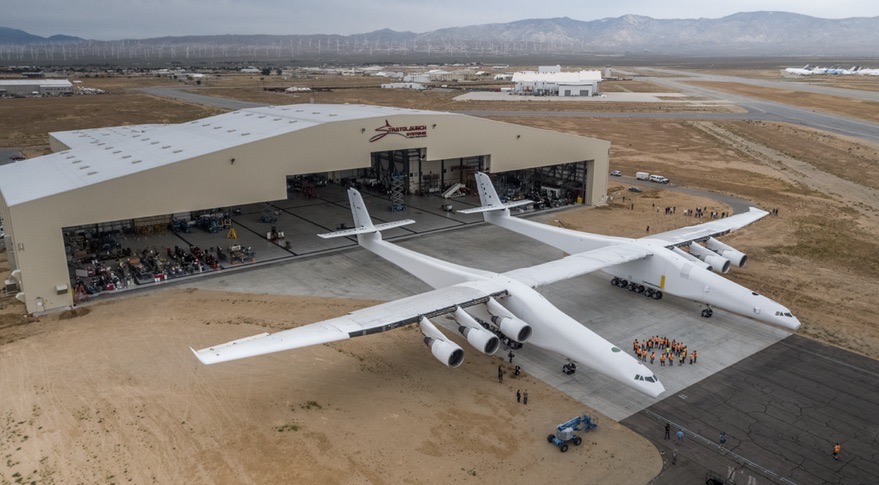
WASHINGTON — Stratolaunch, the company backed by billionaire Paul Allen to develop air-launch systems, rolled out its giant carrier aircraft for the first time May 31 in advance of ground and flight tests.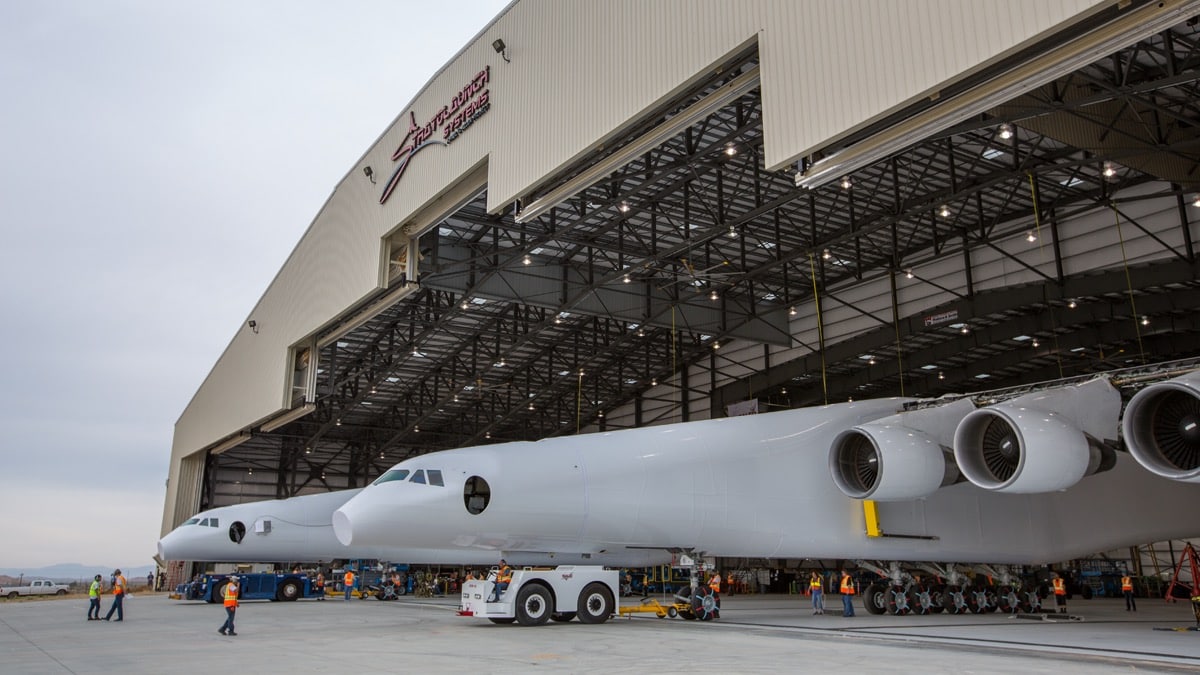
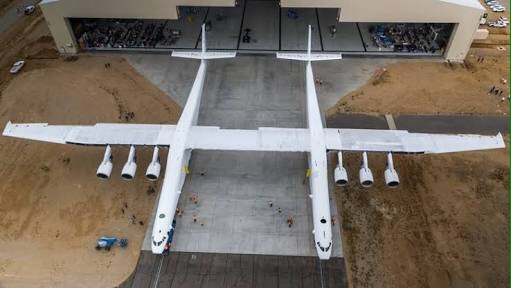
The aircraft moved out of its hangar at the Mojave Air and Space Port in California for the first time since construction of the giant plane began there several years ago. Two tugs towed the aircraft, resting on its 28-wheel landing gear, just outside the hangar to begin a series of tests.
“This marks the completion of the initial aircraft construction phase and the beginning of the aircraft ground and flight testing phase,” Jean Floyd, chief executive of Stratolaunch Systems, said in a statement about the rollout.
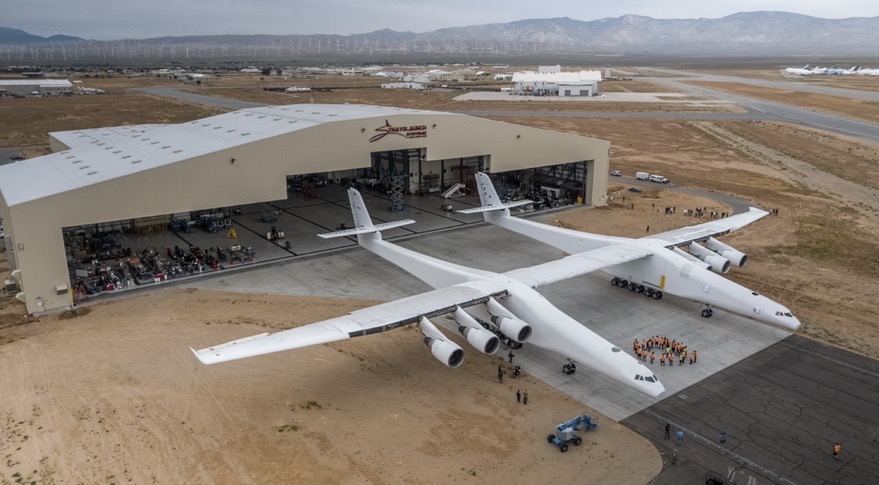
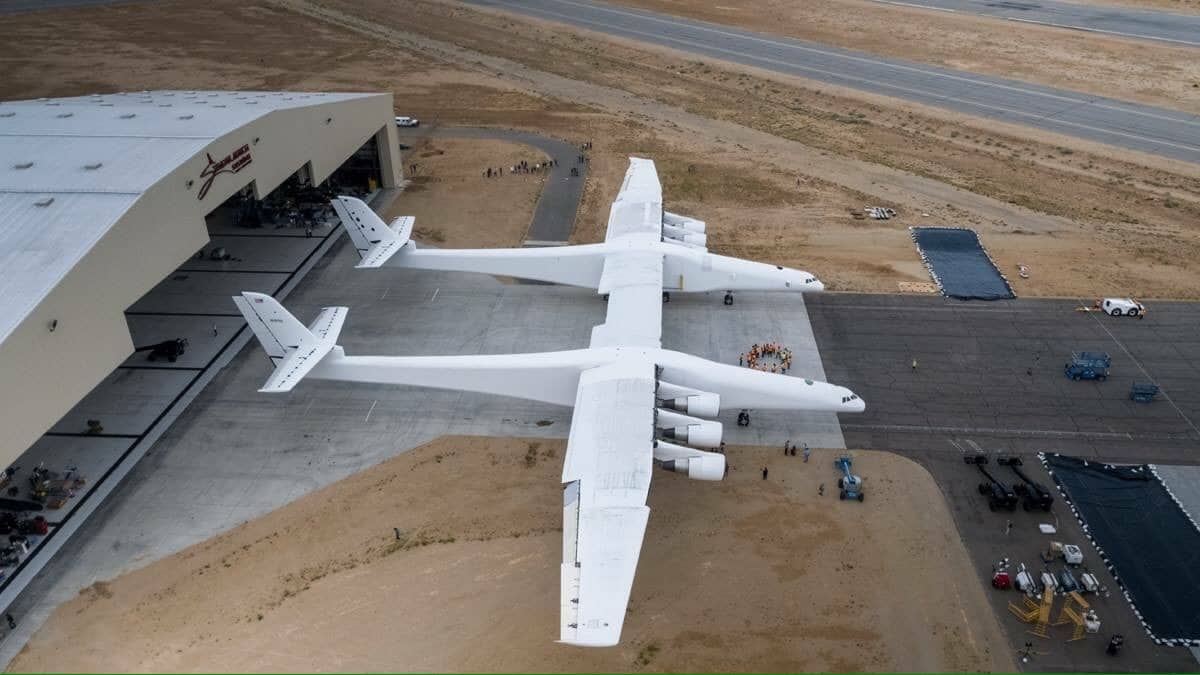
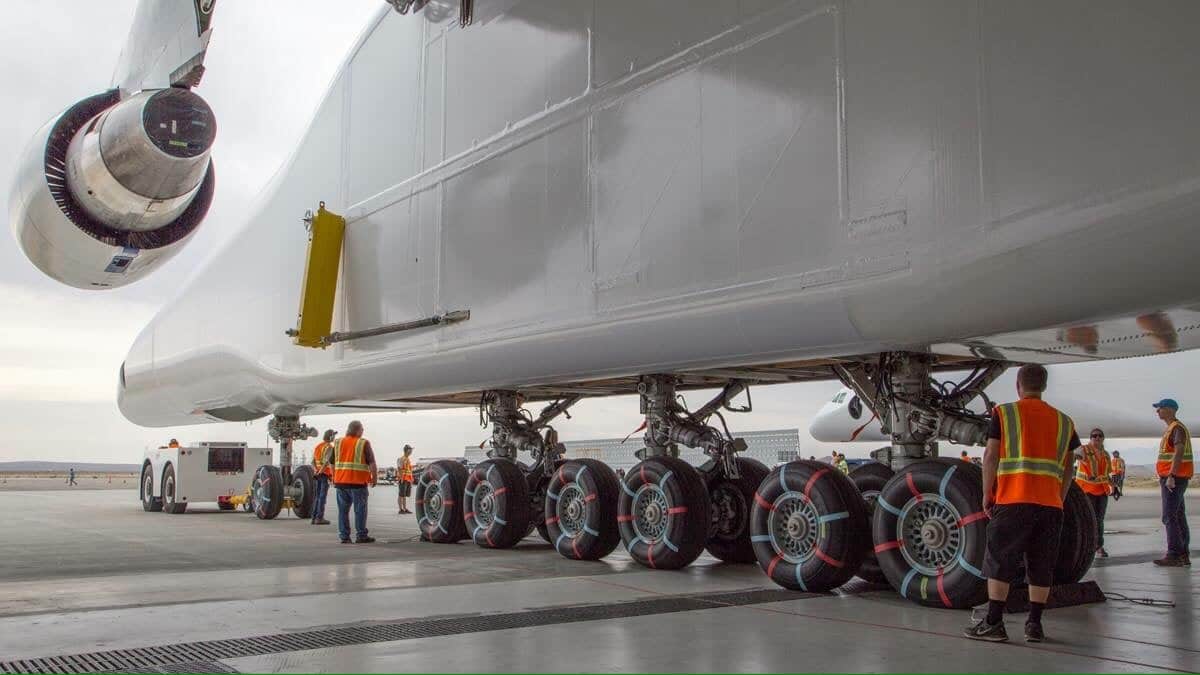
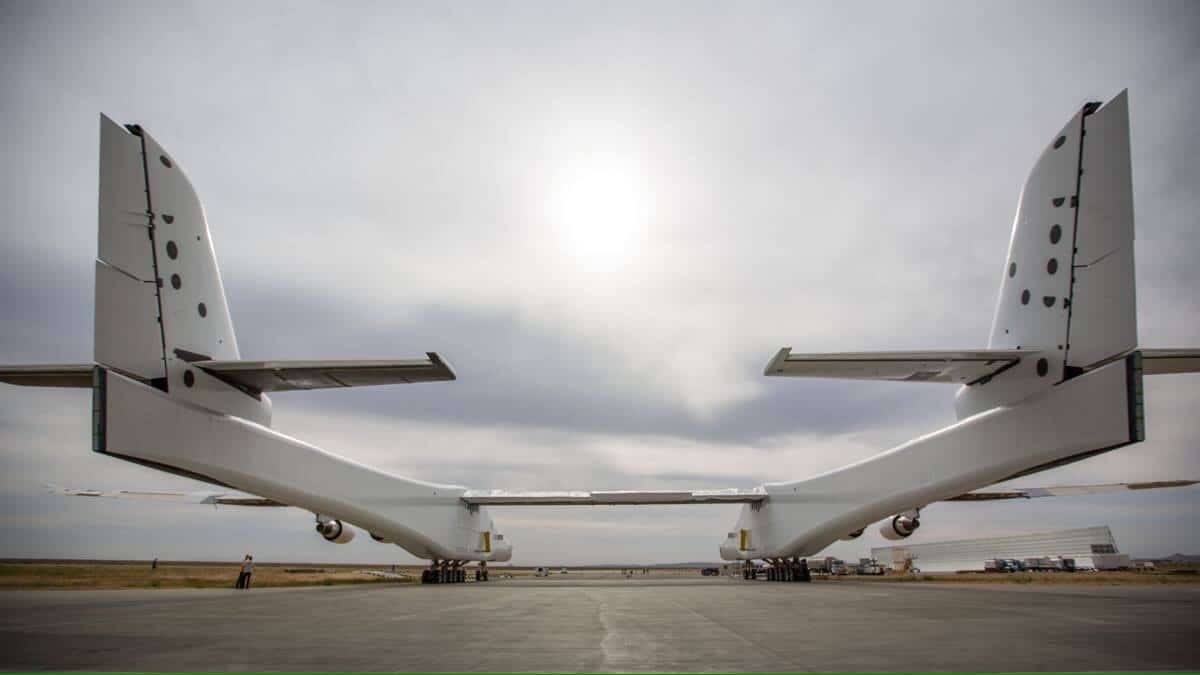
The aircraft’s test program will begin with fueling tests, where each of the plane’s six fuel tanks is independently filled to test their fueling mechanisms and check for leaks. The tanks will then be drained and the plane moved back into the hangar for weight and balance testing, according to a company fact sheet.
Stratolaunch then plans ground and engine tests, including taxi tests at the airport, in the “coming weeks and months,” Floyd said, before the airplane’s first flight. “This is a first-of-its-kind aircraft, so we’re going to be diligent throughout testing and continue to prioritize the safety of our pilots, crew and staff,” he said. “Stratolaunch is on track to perform its first launch demonstration as early as 2019.”
The Stratolaunch aircraft is the largest in the world by wingspan, measuring more than 117 meters from tip to tip. The plane weighs 226,800 kilograms empty, and 50 percent more when fully fueled. It can accommodate payloads weighing nearly 250,000 kilograms, attached to the wing segment between the twin fuselages.
Allen, the co-founder of Microsoft, announced Stratolaunch in late 2011. The aircraft’s size was dictated by initial plans to launch medium-sized payloads using a version of SpaceX’s Falcon 9. The companies parted ways a year later, and Stratolaunch then signed a contract with Orbital Sciences Corp. (now Orbital ATK) to develop a new rocket also for medium-class payloads. That project, known as Thunderbolt, has also been set aside.
Stratolaunch is now focused on the growing demand for small satellites. In October 2016, the company announced a new partnership with Orbital ATK where the Stratolaunch aircraft will be used for launches of Pegasus XL rockets, potentially up to three on a single flight.
Floyd, in the statement, said Stratolaunch was also looking at other vehicles as it makes preparations for accommodating Pegasus rockets at its Mojave hangar. “We’re actively exploring a broad spectrum of launch vehicles that will enable us to provide more flexibility to customers,” he said, without identifying the vehicles under consideration.
The company, funded by Allen, has not disclosed how much money it has spent on the project to date. However, in a May 1 panel session here on ultra low-cost access to space, Floyd was asked if his company was ready to spend “hundreds of millions of dollars” on technologies to reduce launch costs. “Definitely yes, and we already have,” he responded.
Floyd, earlier in that panel, said that Allen’s investment in Stratolaunch was not motivated by any potential financial return. “His vision is to change the human condition,” Floyd said of Allen. “He’s not out to make a buck. He’s not out to get a return on investment.”
“I’m not saying he wants to lose money,” he added. “But Paul Allen has never talked to me about, ‘How much money am I going to make if I pull this off?”

Aviation
Airbus Enhances A350 Cabin with 10-Abreast Seating

Airbus has announced a new partnership with Jiatai Aircraft Equipment, a Chinese aircraft seating manufacturer, to supply upgraded economy-class seats for the A350 widebody series.
This collaboration, unveiled at the 2024 Airshow China, focuses on developing a newly designed economy seat tailored for the A350‘s New Production Standard (NPS) cabin.
One of the key features of the NPS cabin is the ability to accommodate 17-inch wide economy seats, compared to the previous 16.5-inch wide seats that airlines were limited to in the A350’s earlier configurations.
British Airways Unveils Its Brand-New First Class Cabin for the Airbus A380
This change is made possible by the expanded space in the NPS cabin, which is 35 inches longer and 4 inches wider than the previous version. This extra space is achieved by slightly moving the cockpit wall forward and shifting the rear pressure bulkhead back by one frame.
The wider cabin allows airlines to add up to 30 extra economy seats without compromising comfort. For airlines opting for a 3-4-3 seating layout, the 17-inch wide seats are an excellent choice for a more comfortable passenger experience. However, some airlines, such as Iberia, may choose to retain a 9-abreast layout with wider seats for added comfort.
The NPS cabin also offers enhanced flexibility for airline operators. One major advantage is the ability to easily switch between a 9-abreast and 10-abreast seating configuration without requiring significant downtime for aircraft reconfiguration. Airlines can use the same seat rails, tracks, and IFE interfaces, making the transition smoother and quicker.
Etihad Airways Unveils 10 Exciting New Routes for 2025
In addition, the design of the floor attachments and air-conditioning systems has been optimized for 10-abreast seating, meaning airlines can upgrade their cabins without needing to make substantial modifications to the aircraft’s structure.
Though it’s still unclear when Jiatai’s economy-class seats will be officially added to the A350’s Buyer Furnished Equipment (BFE) catalogue, the collaboration marks a significant step toward enhancing the A350’s cabin offerings.
With this partnership, Airbus is providing more seating options for airlines, ensuring that they can meet diverse customer needs while improving overall operational efficiency.
-

 Aviation2 months ago
Aviation2 months agoMicrosoft Flight Simulator Raises $3 Million to Bring Back the An-225 Mriya
-

 Airlines2 months ago
Airlines2 months agoQatar Citizens Can Travel to the United States Without a Visa
-

 Aviation2 months ago
Aviation2 months agoQatar Airways bans these new Electronic Devices on plane
-

 Airlines2 months ago
Airlines2 months agoJapan Airlines Rolls Out Free Domestic Flights to International Passengers
-

 Defence2 months ago
Defence2 months agoWhich Country Has the Largest Fleet of Fighter Aircraft?
-

 Airport2 months ago
Airport2 months agoWestern Sydney Airport Welcomes Its First Plane After 6 Years of construction
-

 Airlines4 days ago
Airlines4 days agoDAMAC Air: Dubai’s New Luxury Airline Offers Free Flights for Registration
-

 Aviation2 months ago
Aviation2 months agoDid you know ? Once Boeing 747 carried 1088 passenger in 1991








